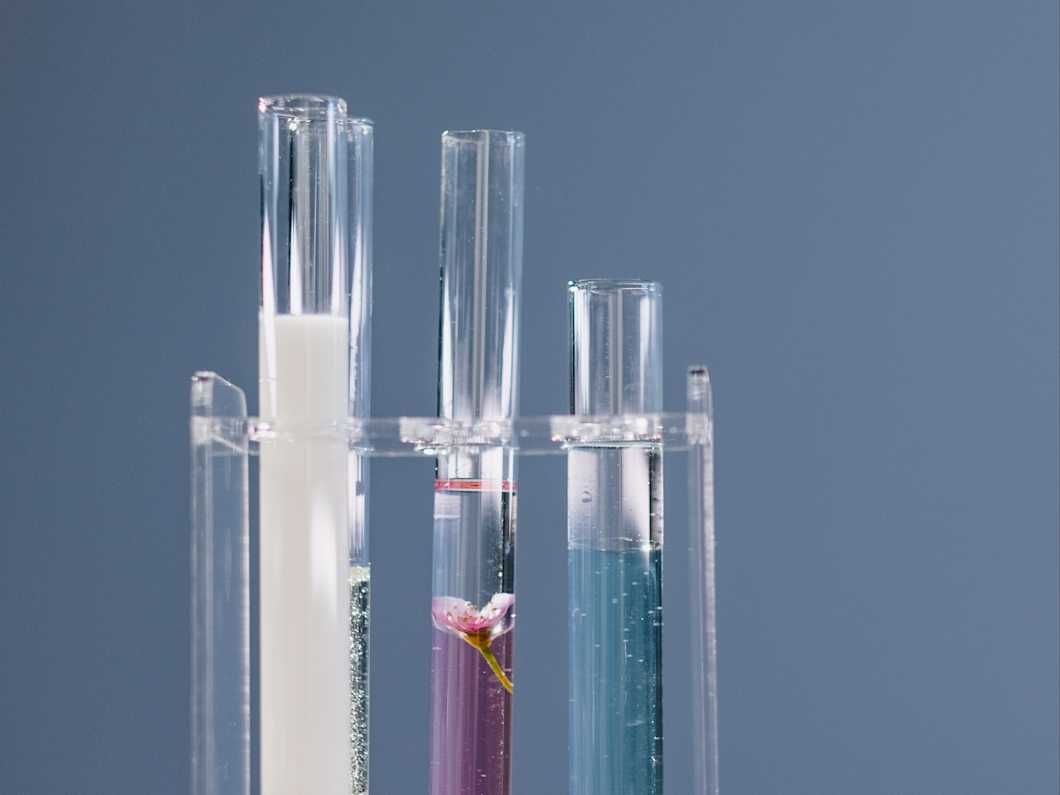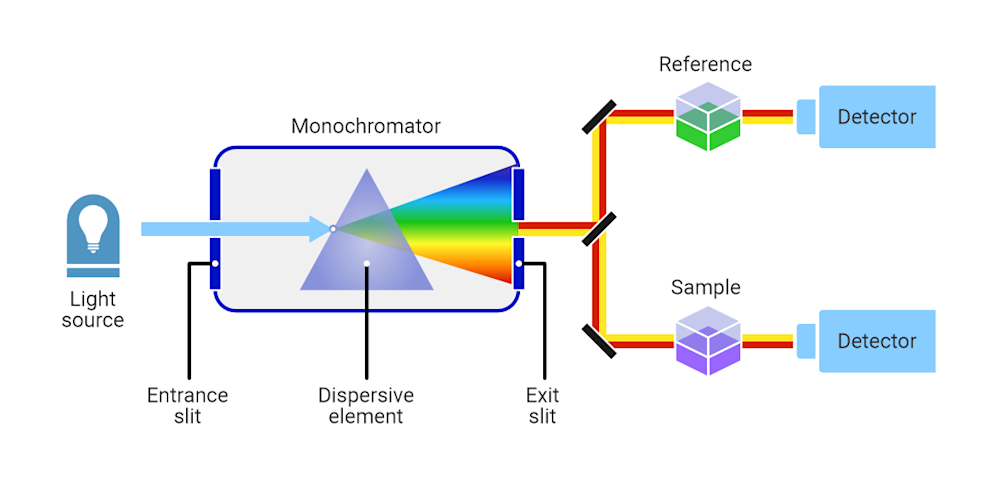UV-visible spectroscopy
UV-visible spectroscopy is an analytical technique used to study the chemical properties of a sample based on how it interacts with visible and ultraviolet light. UV-Vis can be used to measure concentrations, identify unknown compounds, and provide information about the physical and electronic structures of organic and inorganic compounds. It is widely used in chemical, physical, and biological assays.

Some of our UV-Vis analysis services
Formaldehyde content in extracts of paper and board
Lignin content of biomass
Compositional analysis of biomass
Spectral transmittance and reflectance with UV-Vis (liquid samples)
Dissolved silicon in ultrapure water
EN 717-1: Formaldehyde emissions from construction materials
Spectral transmittance and reflectance with UV-Vis-NIR (solid samples)
Prices excluding VAT.
- Fast turnaround times
- Personal service from method experts
- Competitive prices
- Result accuracy guarantee
What is UV-visible spectroscopy used for?
UV-Vis spectroscopy can be used to identify the presence of both organic and inorganic compounds in a solution and quantify their concentrations quickly and efficiently. This gives the method applications in chemical analysis, where it can also be used to monitor the progression of reactions.
DNA and RNA can be effectively quantified using UV-Vis, as absorption of UV light at 260 nm is an indicator of their presence. UV-Vis is also a popular quality assurance technique in the pharmaceutical and food industries, and can be used to characterize the composition of industrial chemicals according to the REACH regulation.
How does UV-vis spectroscopy work?
A UV-Vis spectrophotometer works by shining light onto a sample that is usually in the form of a solution, though solid-state UV-Vis is also occasionally used. The light's wavelength is gradually varied across a range of ultraviolet and visible light, and the percentage of light that passes through the solution is monitored. From this, the amount of light absorbed at each wavelength can be presented as a spectrum that can be compared to existing data libraries to identify the sample's components.

When a sample absorbs a certain wavelength of light, its visual appearance will usually be of the color of light on the opposite side of the spectrum. For example, a solution that strongly absorbs blue light will typically appear orange to us. UV-Vis makes the most of this quality and gathers important data by analyzing the type of light that a sample will absorb or reflect.
Strengths and limitations of UV-vis
The ability of UV-Vis to analyze organic compounds in addition to inorganic ones is a major advantage compared to methods like atomic fluorescence spectroscopy (AFS) and atomic absorption spectroscopy (AAS), which can only detect elements that absorb light in the visible range.
The primary limitation of UV-visible spectroscopy is its inability to analyze compounds that do not interact with light in the UV and visible areas of the spectrum. This includes certain inorganic compounds and organic components that do not have a high level of electron conjugation. The effectiveness of UV-vis will depend mostly on the compound and whether or not it has the correct properties to interact with UV or visible light.
Furthermore, to determine unknown concentrations using UV-vis, other known concentrations will usually need to be analyzed to produce a calibration curve as a reference. For this, several samples may need to be tested, making the calibration process much more lengthy than the analysis itself.
Sample requirements and preparation
In most cases, UV-Vis samples must be dissolved in a suitable solvent before analysis. The solvent should successfully dissolve any solid material without producing any results itself. The resulting solution must be in a concentration that allows light to transmit through. If the concentration is too high, the solution will likely need further dilutions until accurate results can be obtained.
Solid-state UV-visible spectroscopy is also occasionally used. For this, a solid sample is compacted into a disc, and the light reflected from it is analyzed. The sample must be in a powdered form so that it can be easily analyzed by the spectrophotometer.
Need UV-Vis spectroscopy analyses?
Measurlabs offers UV-visible spectroscopy analyses with fast results and affordable prices, whether you have just a few or up to hundreds of samples. If you have any questions about the suitability of the method for your project, our experts are always happy to help. You can contact us through the form below, and we will get back to you by the next business day.
Join the 700+ companies that already rely on Measurlabs to consistently deliver fast, accurate, and expert-driven testing services.
Suitable sample matrices
- Conjugated organic materials
- Compounds that contain metals
- Solutions of suitable concentrations
- Powdered solid materials
Ideal uses of UV-Vis
- DNA & RNA analyses
- Determining unknown concentrations
- Identifying unknown chemicals
- Analyzing colored solutions
Ask for an offer
Fill in the form, and we'll reply in one business day.
Have questions or need help? Email us at info@measurlabs.com or call our sales team.
Frequently asked questions
UV-visible spectroscopy is used to analyze the chemical properties of a material. It can be used to determine concentrations, identify unknown compounds, and provide information about the physical and electronic structures of organic and inorganic compounds.
Solutions of suitable concentrations, conjugated organic molecules, compounds containing metals, and powdered solids are suitable for UV-Vis analysis.
UV-visible spectroscopy is unable to analyze compounds that do not interact with light in the UV and visible areas of the spectrum. Examples of this type of material are organic components that do not have a high level of electron conjugation, as well as certain inorganic compounds.
Measurlabs offers a variety of laboratory analyses for product developers and quality managers. We perform some of the analyses in our own lab, but mostly we outsource them to carefully selected partner laboratories. This way we can send each sample to the lab that is best suited for the purpose, and offer high-quality analyses with more than a thousand different methods to our clients.
When you contact us through our contact form or by email, one of our specialists will take ownership of your case and answer your query. You get an offer with all the necessary details about the analysis, and can send your samples to the indicated address. We will then take care of sending your samples to the correct laboratories and write a clear report on the results for you.
Samples are usually delivered to our laboratory via courier. Contact us for further details before sending samples.